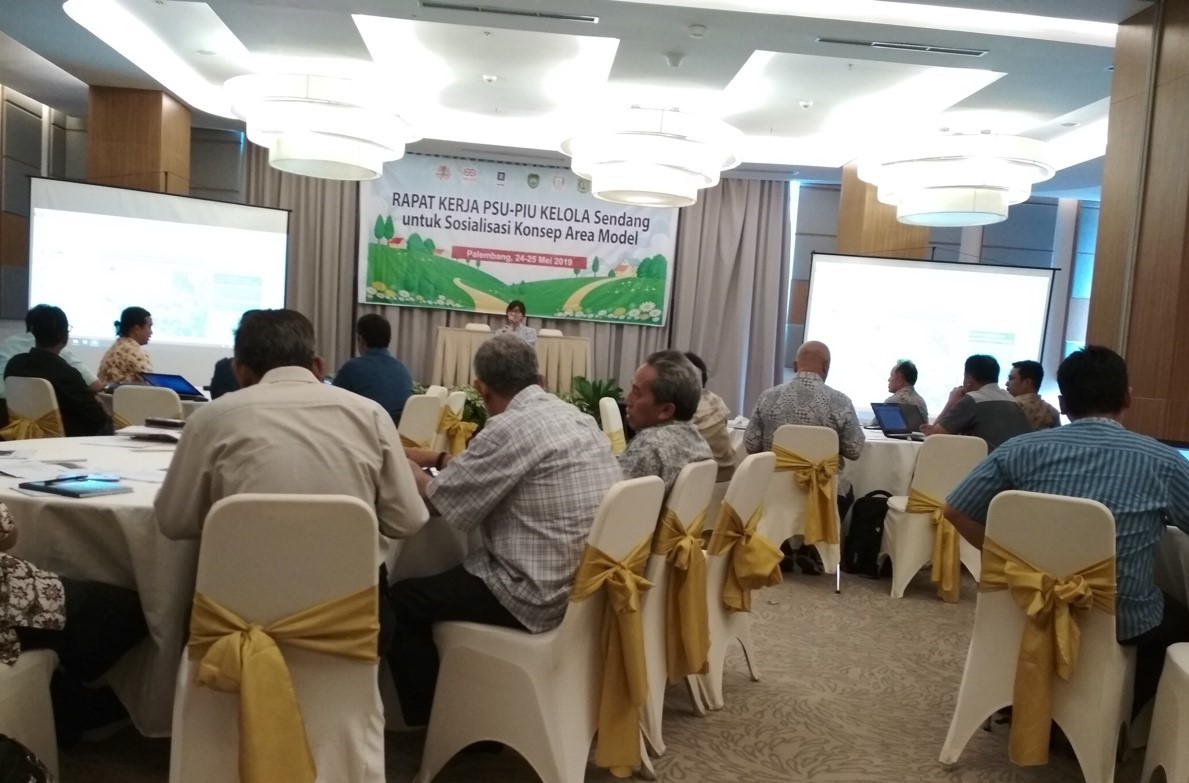POLITICAL TURBULENCE AND FOREST, AND LAND FIRES
After explaining the GLA assessment method to measure the success of the KELOLA Sendang program, Sigit and colleague began to describe the KELOLA Sendang program in detail. There are four sub-chapters that discuss this issue.

The first sub-chapter discusses how inclusive the KELOLA Sendang program is. Broadly speaking, the KELOLA Sendang program is indeed an advanced system with all of its technological sophistication. However, because of this also, ordinary people have a little difficulty optimizing its access and features. Thus, field monitoring and evaluation activities have become a routine activities in order to help the citizens mastering the program, so that socialization of further plans can be carried out.
After that, the government begins the next step in the second sub-chapter, which is to carry out a transformation towards a culture of collaboration in the landscape. To make the KELOLA Sendang program a success, good collaboration is needed between the government, Non-Governmental Organizations (NGOs), private entrepreneurs, and the community itself. Only after collaboration happens, there will be a sense of shared ownership of the landscape, willingness to share knowledge and experiences, peaceful conflict resolution, and the emergence of innovative ideas to develop the KELOLA Sendang program.

Socialization of the KELOLA Sendang Program.Source: https://implementingnetwork.penabulufoundation.org/
One of the government’s breakthroughs is to change the pattern distribution of CSR funds, which was previously sporadic and short-term, has now turned into a long-term development concept with a clearer goals. This is done in order to maximize the potential of CSR funds for the development of the KELOLA Sendang program. For example, the government invites the community to prevent illegal logging activities or forest and land fires. The government then launched the concept of sustainable livelihoods in the form of developing agrosilvofishery or an integrated cultivation pattern that is peatland friendly. Local companies also agreed to provide assistance in the form of materials needed to make this agrosilvofishery development successful
At this stage, the sustainability of the KELOLA Sendang program had to faced several challenges. There are two things that are considered as the main challenges, which are the political turbulence in the regional head election (Pilkada Governor 2018) and the 2019 forest and land fires (karhutla) which destroyed several initiatives in Model Area 2. However, thanks to the sense of ownership of the various parties involved, they were able to defeat the “sectoral ego” in these two challenges. The KELOLA Sendang program was able to overcome its challenges well.
In the third sub-chapter, Sigit and his friends discuss the partnership master plan as a means of coordination. The KELOLA Sendang masterplan itself is one of the results of the work, as mandated in the South Sumatra Governor’s Decree No. 332/KPTS/Bappeda/2017 regarding the formation of the project supervisory unit team and the project implementing unit for the Sembilang-Dangku sustainable landscape management. This masterplan serves to connect all the goals, priorities, and all themes of collaboration, so that they are corresponding with the initial objectives of KELOLA Sendang program.
However, at this stage there are challenges that are quite difficult to deal with, which is the tendency of some parties to move in a sectoral manner. Meanwhile, on the positive side, the disclosure of information has become more transparent, so that external forums can access information about the KELOLA Sendang program and compare it with their achievements. This functioning as a way to increase the effectiveness of cooperation between the two parties in the future.
In the last sub-chapter, we explore the process towards a sustainable mindset and action. This aspect includes what practices have been done and what penalties have been applied in order to realize the vision and mission of the KELOLA Sendang program. One of the important points underlined is how the KELOLA Sendang program implements different practices according to the needs of a region. So, the rationality aspects is very much considered in KELOLA Sendang program and it does not seem like all regions getting the same treatment.
For instance, Sigit mentions Area Model 3. Judging from the condition of the area, the KELOLA Sendang program implements rainwater harvesting, waste handling, and swamp rats. This sustainable practice relies heavily on the contribution of innovation and creative ideas launched by the government to facilitate the work of the community in order to make the KELOLA Sendang program successful. (Steven Chaniago, PR team. Photo: www.researchgate.net).
Source: https://president.ac.id/p/175-feature/detail/1088-kelola-sendang-part-3-of-4-articles
